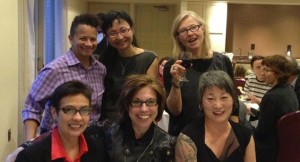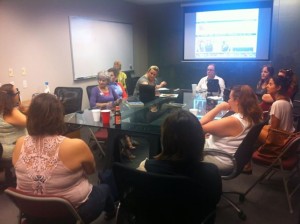Digital Access, Authority and Agency in the Afro-Francophone World
By Katrina Spencer, University of Illinois, Urbana-Champaign
Quiz Item 1
Which of the following is a French-speaking nation?
A. Senegal
B. Cameroon
C. Togo
D. Burkina Faso
The correct answer is E., all of the above. French is spoken as a language of importance and repute in 29 countries. The answer to the first item on this “exam” is a freebie.
Although when we think of the land of berets and baguettes, we in the United States tend to envision ‘European,’ ‘white,’ the Eiffel Tower, escargot (snails), Napoléon, Les Misérables, the Champs Élysées and delicious chocolate croissants, ‘reading France’ within such a narrow panorama of stereotypes and cultural production would be to deny its colorful, multifaceted diversity and
Quiz Item 2
A. rich
B. rancorous
C. rife
D. wretched
history in the Caribbean, in the Maghreb (a region on Northern Africa that includes primarily Islamic countries like Algeria, Tunisia and Morocco) and importantly for this post, in Sub-Saharan or ‘black’ Africa. It would be akin to saying the United States is hamburgers, Lady Liberty, American Idol and nothing else. And that’s not true, right?
Quiz Item 3
Like the Spanish, the English and the Portuguese, the French
A. approached
B. invaded
C. discovered
D. colonized
a broad swath of territories on both sides of the Atlantic (and sometimes, to a lesser degree, the Pacific) which has problematized the ideas of nationhood, citizenship, sovereignty and independence. Perhaps it needn’t be said, but this type of historical domination has ushered in a long era of instability throughout ‘post-colonial’ Africa. This is reflected in much of its underdeveloped infrastructures that challenge consistent digital access to open sources of information like Wikipedia, a central theme to this post. What’s more is that widely disseminated and popular depictions of the continent and its people are rarely created, framed, drawn or written by African authors. Despite the foreign voices that have supplied these images and scribed these stories, both have been widely published for and understood as truth by global audiences.
Now that you’ve completed your history quiz, know that Afripédia, in conjunction with Wikimédia France, has initiated a project with two major goals: one is to supply a number of Francophone (French-speaking) African countries and their residents with offline access to Wikipedia via plug computers like this one, given that many African nations still negotiate the difficulty of acquiring regular and high-quality connectivity to the Internet; the second goal is to supply these same parties with the authority, the opportunities and the instruction to digitally publish information and construct narratives about their places of origin, national events and developments. In other words, Francophone Africans are being provided with the platforms necessary to create information about themselves, to meaningfully shape archives, chronicles and narratives about themselves and to disseminate them all throughout the world.
Born in the summer of 2012, Afripédia comprises a series of campaigns aimed to educate Francophone Africans regarding the use of Wikipedia. Included in this instruction are themes centering on how to create a Wikipedia article, how to edit its existing articles, how to add images to these articles and more. The program has been met with a good deal of enthusiasm and supporters in the 11 participating African regions have been numerous. The program, however, is not immune to local hindrances: challenges like university strikes, restricted so far to two cities have delayed the speedy and effective implementation of the program in otherwise interested and invested sites. Afripédia’s next step is to widen its scope by including countries like Madagascar that form part of the Afro-Francophone world, but have yet to engage these initiatives.
This program is unique in that it seeks to promote and respect an admittedly rare concept of African agency. Instead of assuming an entirely paternalistic role in indicating what articles must be written, how, why and when, the program has taken on a fraternal one in providing the tools necessary for Ivorians (people from the Côte d’Ivoire), the Beninese (people from Benin) and Chadians (people from Chad) and many more to craft their own histories and stories with a great degree of liberté. Afripédia’s ethos wins our admiration as it demonstrates a desire to reconcile an at times turbulent past and to welcome a newly defined, post-colonial legacy of teamwork and mutual, international and intercontinental support.
Updates on the program’s progress can be followed via Twitter @Afripedia. Any party interested in becoming involved is encouraged to contact Adrienne Charmet-Alix at the following e-mail address: adrienne.alix(at)wikimedia.fr. With regard to the remaining multiple choice questions for Items 2 and 3, please create your own answer key and grade yourself accordingly.









